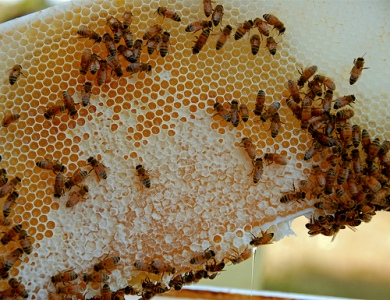The Not-So-Sweet World of Honey
Although consumers don’t necessarily see “Made in China” on honey labels, a new exposé published in the UK’s Globe and Mail tells of the almost spy-thriller-like process in which honey produced in China travels through southeast Asia and onto millions of tables—and into millions of stomachs—around the world.
In China, where the overwhelming majority of the honey ingested globally originates, beekeepers attempt to keep bees alive by feeding them antibiotics that are banned in North America because the drugs can seep into and contaminate the honey. The honey is often intentionally mislabeled as originating elsewhere, and is also diluted with sugar and corn syrup.
In a companion article, the National Academy of Sciences reports that the U.S. bee population has seen a dramatic decline in recent years due to inbreeding and habitat loss, and that changes must be made to end the bees’ spiral toward extinction. Agave nectar, anyone?


